 W
WAnolis allisoni, also known commonly as Allison's anole or the blue-headed anole, is a species of lizard in the family Dactyloidae. The species is endemic to Cuba, the Bay Islands and Cayos Cochinos off the mainland of Honduras, and Half Moon Caye off the mainland of Belize. There is also a single doubtful record from Cozumel, Mexico. This diurnal species is commonly seen on palm trunks, and it feeds on invertebrates. It is among the relatively few anole species in which females may lay their eggs together, forming a communal nest.
 W
WAnolis biporcatus, also known as the neotropical green anole or giant green anole, is a species of anole. It is found in forests, both disturbed and undisturbed, in Mexico, Central America, Colombia and Venezuela. More southern populations, in southwestern Colombia and western Ecuador, were recognized as a separate species, A. parvauritus, in 2017.
 W
WThe Belize leaf-toed gecko is a species of gecko native to Belize. It is a small, pale, large headed gecko only found on small islands off Belize's coast and was first described by James R. Dixon in 1960. This species is currently classified as "vulnerable" by the IUCN Red List.
 W
WThe Central American snapping turtle, also known commonly as the Mexican snapping turtle and the Yucatan snapping turtle, is a species of turtle in the family Chelydridae. The species is endemic to Central America and Mexico.
 W
WThe American crocodile is a species of crocodilian found in the Neotropics. It is the most widespread of the four extant species of crocodiles from the Americas, with populations present from South Florida and the coasts of Mexico to as far south as Peru and Venezuela.
 W
WMorelet's crocodile (Crocodylus moreletii), also known as the Mexican crocodile, is a modest-sized crocodilian found only in fresh waters of the Atlantic regions of Mexico, Belize and Guatemala. It usually grows to about 3 metres (9.8 ft) in length. It is a Least Concern species. The species has a fossil record in Guatemala.
 W
WCtenosaura similis, commonly known as the black spiny-tailed iguana, black iguana, or black ctenosaur, is a lizard native to Mexico and Central America that has been introduced to the United States in the state of Florida. It is the largest species in the genus Ctenosaura and has been recorded as the fastest-running species of lizard.
 W
WThe eastern casquehead iguana is a species of lizard in the family Corytophanidae. The species is endemic to Central America and Mexico.
 W
WFicimia publia is a species of colubrid snake, indigenous to southern Mexico, Belize, Guatemala, and Honduras.
 W
WThe furrowed wood turtle is a species of turtle belonging to the genus Rhinoclemmys of the family Geoemydidae found in the Yucatán Peninsula and adjacent regions of Central America.
 W
WImantodes cenchoa is a species of rear-fanged colubrid snake distributed in Mexico, Central America, and South America.
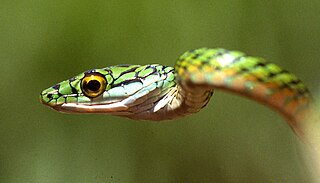 W
WLeptophis ahaetulla, commonly known as the lora or parrot snake, is a species of medium-sized slender snake of the family Colubridae. It is endemic to Central America and northern South America.
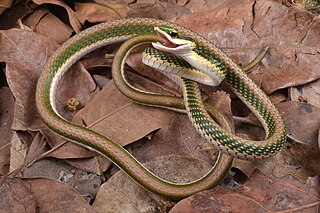 W
WLeptophis mexicanus, commonly known as the Mexican parrot snake, is a species of medium-sized slender snake in the family Colubridae. The species is endemic to the Americas.
 W
WThe Meso-American slider is a species of turtle belonging to the family Emydidae. The species is distributed from Mexico to Colombia.
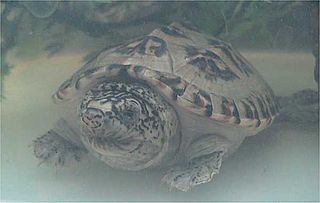 W
WThe Mexican musk turtle, also known commonly as the narrow-bridged musk turtle, is a species of turtle in the family Kinosternidae. The species is endemic to Central America and Mexico.
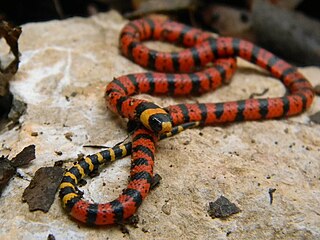 W
WMicrurus diastema, commonly known as the variable coral snake, is a species of venomous snake in the family Elapidae. The species is endemic to southeastern Mexico and northern Central America. There are seven recognized subspecies.
 W
WThe Middle American burrowing snake is a species of dipsadine colubrid snake, endemic to Mexico and Central America.
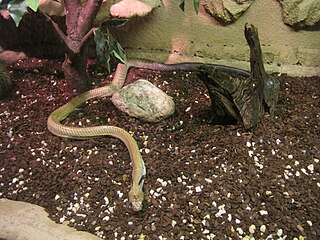 W
WThe Middle American indigo snake, also known commonly as the blacktail cribo, is a species of large, nonvenomous, snake in the family Colubridae. The species is endemic to the southwestern United States, Mexico, Central America, and northern South America. In addition to the nominotypical subspecies, it has four other recognized subspecies, including D. m. erebennus commonly known as the Texas indigo snake.
 W
WThe narrow-bridged musk turtle is a species in of turtle in the family Kinosternidae. The species is endemic to Central America and Mexico.
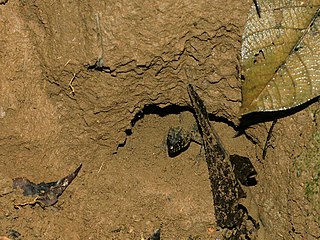 W
WThe yellow-spotted tropical night lizard or yellow-spotted night lizard is a species of night lizard. It is distributed from central Mexico through the Central America south to Panama. It includes four subspecies:Lepidophyma flavimaculatum flavimaculatum Lepidophyma flavimaculatum ophiophthalmum Lepidophyma flavimaculatum tehuanae Lepidophyma flavimaculatum tenebrarum
 W
WNinia sebae, commonly known as the redback coffee snake or the red coffee snake, is a species of small terrestrial snake in the family Colubridae. The species is endemic to Mexico and Central America south to Costa Rica. Although it resembles some venomous coral snakes in color and size, it is not venomous and seldom bites humans.
 W
WOxybelis fulgidus, commonly known as the green vine snake or the flatbread snake, is a species of long, slender, arboreal colubrid snake, which is endemic to Central America and northern South America.
 W
WOxyrhopus petolarius, commonly known as the false coral, is a species of snake in the family Colubridae. The species is endemic to South America. There are three recognized subspecies.
 W
WPhrynonax poecilonotus is a species of nonvenomous snake in the family Colubridae. The species is endemic to the New World.
 W
WPorthidium nasutum is a venomous pitviper species found in Mexico, Central America and northern South America. No subspecies are currently recognized.
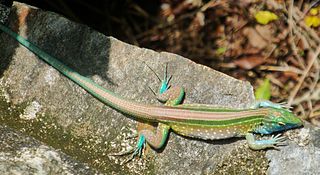 W
WThe rainbow whiptail is a species of lizard found in Central America, the Caribbean, and northern South America. It has also been introduced in Florida and has established populations there. A rainbow whiptail grows up to approximately 12 inches (30.5 cm).
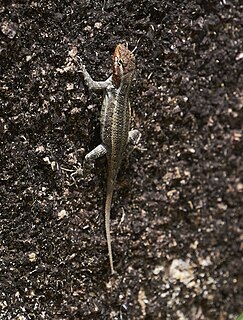 W
WSceloporus chrysostictus, the yellow-spotted spiny lizard or Yucatán spiny lizard, is a species of phrynosomatid lizard.
 W
WSibon dimidiatus is a species of snake in the family Colubridae. It is found in Central America.
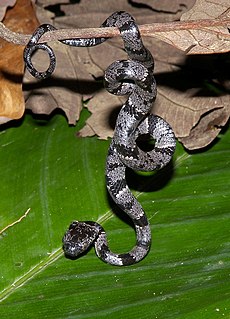 W
WSibon nebulatus, commonly known as the clouded snake, is a species of small, slender arboreal snake which is found in southern Mexico, Central America, northern South America, Isla Margarita, and Trinidad and Tobago.
 W
WSibon sanniolus, commonly known as the pygmy snail-eating snake or the pygmy snail sucker, is a species of small snake in the family Colubridae. The species is endemic to Central America and southeastern Mexico.
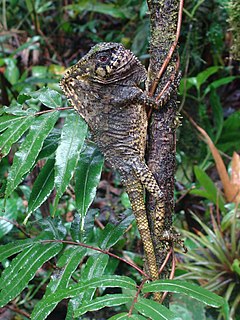 W
WThe smooth helmeted iguana, sometimes also known as helmeted iguana, helmeted basilisk, elegant helmeted lizard, etc., is a species of New World lizard in the family Corytophanidae.
 W
WSphaerodactylus glaucus is a species of gecko known by the common name collared dwarf gecko or least gecko.. It is native to Mexico and parts of Central America, its range extending from Oaxaca and Veracruz in Mexico through Guatemala to Honduras.
 W
WStaurotypus is a genus of aquatic turtles, commonly known as giant musk turtles, Mexican musk turtles, or three-keeled musk turtles, in the family Kinosternidae. The genus contains two recognized species, which are endemic to Mexico and Central America.
 W
WThe Tabasco mud turtle, commonly known as pochitoque in Tabasco, Mexico, is a small turtle which belongs to the family Kinosternidae. It can be found in central Veracruz, Tabasco, northern Guatemala and Belize. This turtle lives in small streams, marshes and ponds. Its feeding habits are mainly carnivorous and it is a nocturnal animal. Although this turtle doesn't have a wide range it can be common at some sites. In Tabasco this turtle is an important part of its popular culture as well as being an ingredient in Tabasco's gastronomy in spite of its special protected status.
 W
WTantilla melanocephala, commonly known as the black-headed snake, is a species of small colubrid snake endemic to Central America and South America.
 W
WThamnophis proximus, commonly known as the western ribbon snake, is a species of garter snake in the subfamily Natricinae of the family Colubridae. The species is endemic to the western United States, Mexico, and Central America. The species has six recognized subspecies.
 W
WThe Central American river turtle, also known locally as the hickatee or tortuga blanca, is the only living species in the family Dermatemydidae. Its closest relatives are only known from fossils with some 19 genera described from a worldwide distribution from the Jurassic and Cretaceous. The species is currently found in the Atlantic drainages of Central America, specifically southern Mexico, Belize and Guatemala. It is a relatively large-bodied species, with historical records of 60 cm (24 in) stright carapace length and weights of 22 kg (49 lb); however, more recent records have found few individuals over 14 kg (31 lb) in Mexico or 11 kg (24 lb) in Guatemala.
 W
WThe white-lipped mud turtle is a species of mud turtle in the family Kinosternidae. The species is endemic to Central America and northwestern South America.
 W
WGonatodes albogularis, which has been called a number of vernacular names in English, is a smallish species of gecko found in warm parts of Central and South America, Cuba, Hispaniola and Jamaica. It is sexually dimorphic: the male is colourful, while the female is a more drab grey. The fingers do not have lamellar pads for climbing smooth surfaces like many other geckos but instead have normal claws like most lizards. At one time the species had a breeding population in southern Florida, especially Key West, but this population appears to have died out by the early 1990s.
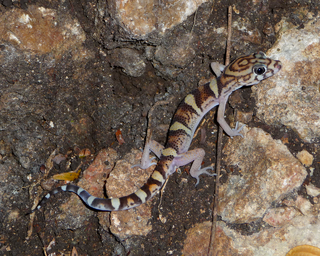 W
WThe Yucatán banded gecko is a species of geckos found in Mexico, Guatemala, and Belize.